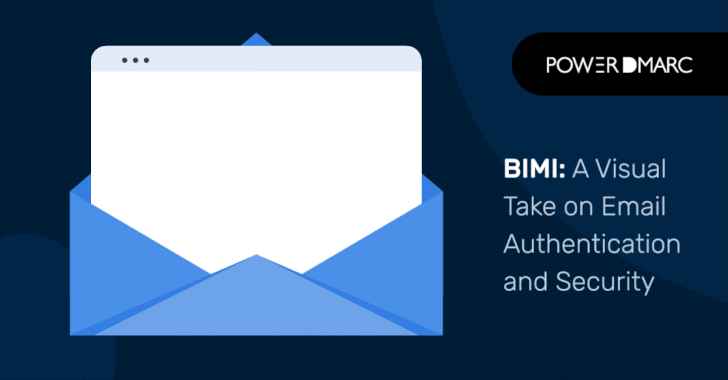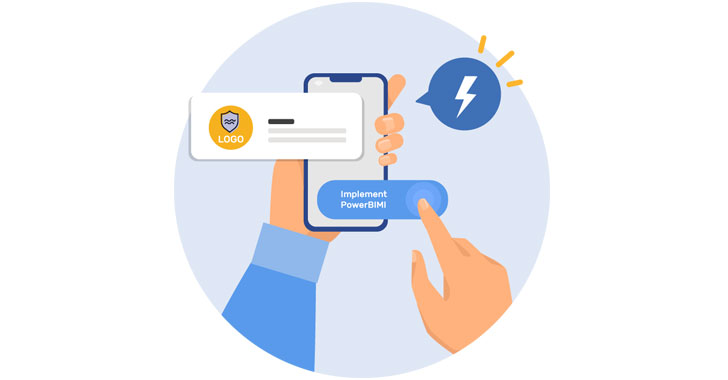There is a saying that goes something like, "Do not judge a book by its cover." Yet, we all know we can not help but do just that - especially when it comes to online security.
Logos play a significant role in whether or not we open an email and how we assess the importance of each message. Brand Indicators for Message Identification, or BIMI, aims to make it easier for us to quickly identify important information within emails using branding guidelines and visual cues found in logos.
In recent years, users are often unsure about the authenticity of emails, and this has become a major issue for businesses fighting spam. BIMI gives email users access to information about a brand's identity. A company has complete control and freedom over what logo to attach to authenticated emails. Overall, BIMI acts as an additional layer of security to the existing email authentication process.
What is BIMI, and how does it strengthen the security of your emails?
BIMI is a standard that allows organizations to display their unique brand logos alongside DMARC-compliant emails by changing certain DNS records. BIMI centralizes logo display by allowing domain owners to use a single, standardized image. Eliminating the need for proprietary systems for logo display and management also eliminates the frustration of brand proliferation. It improves the user experience across the email inbox.
Before you set out to set up your BIMI record, there are a few important requirements you should consider. These are as follows:
Before implementing BIMI, make sure your domain is set up with a DMARC policy of either "reject" or "quarantine" using DMARC Report Analyzer. You will need to convert your BIMI logo image to an SVG file that meets the BIMI standard specifications. Get a Verified Mark Certificate from a trusted certification authority.Before your emails can reach your recipients, they will be authenticated against the DMARC system. After they pass DMARC, the receiving server queries the sender's DNS for a BIMI record. If found, the sender's logo is displayed in the recipient's inbox. Although BIMI is not directly a security protocol, it requires DMARC-based authentication to function.
This ensures that emails are verified before they reach your clients, extending and enforcing the implementation of security standards.
Note: The display of your logo when using BIMI is determined by the mailbox provider. Only mailbox providers that support BIMI will display the logo.
The highlight of 2021: Gmail extends support to BIMI
Previously, BIMI was supported by Verizon Media, including Yahoo!, AOL, and Netscape, while Fastmail and Gmail were still working on their pilot program. In July 2021, the makers of BIMI made the long-awaited announcement that Google was officially rolling out BIMI to all Gmail inboxes.
It's no surprise that email is a viable communication tool used by 80% of businesses around the globe, and it's not going away anytime soon. At a time when attackers are attempting to launch phishing campaigns by assuming sender identities, email security improvements must be continuous and ever-evolving.
That's why email clients are slowly but surely adopting email authentication standards like DMARC, MTA-STS, and BIMI to ensure domain owners protect their information from hackers.
Currently, BIMI is supported by the following mailbox providers:
Fastmail Proofpoint Verizon Media (Yahoo!, AOL) GoogleBIMI and VMC: Verified Mark Certificates and Their Uses
Verified Mark Certificates is a solution that helps businesses display verified brand logos in the clients' sender field. VMC builds on BIMI standards to help businesses seamlessly begin their BIMI journey with verified brand logos displayed in recipients' inboxes, rather than an arbitrary logo that does not represent their brand in any way.
A VMC is issued by a publicly trusted certification authority. Similar to BIMI, the following requirements must be met:
Make sure your brand logo is trademarked Ensure that your emails are DMARC compliant. Have your brand logo ready (in SVG format) that complies with BIMI specificationsOnce you have your certificate, you can upload it along with your logo to the PowerBIMI dashboard with a single click to configure BIMI for your business.
How to create a BIMI record: Single-Click BIMI DNS Record Implementation with PowerBIMI
A BIMI record is essentially a DNS TXT record that needs to be published to your domain's DNS to configure the protocol. You can easily create your own BIMI record using free BIMI record generator tool. This tool will instantly generate an error-free record as soon as you upload your brand logo and click the "Generate Record" button!
With PowerBIMI, the hosted BIMI record service; it's now possible to avoid the hassle of configuring the record! It will help you quickly get to an enforced DMARC policy to meet BIMI requirements and avail of the following benefits when you get on board:
Hosted BIMI services that let you configure and run the protocol effortlessly, as PowerBIMI handles all the complexity in the background. Protocol implementation for the end-user is reduced to publishing a single CNAME record. Uploading your SVG logo and VMC is instant, with a single click. Change and update your BIMI record configurations directly from the dashboard without having to go back to your DNS or servers over and over again. Easy troubleshooting with constant support from round-the-clock support team.Simply configuring your email authentication protocols is not enough to protect your domain from abuse and impersonation. To stay abreast of evolving attacker tactics and maintain a continuous view of all your email channels and sending sources, monitor, secure and protect your domains. Sign up for free DMARC and BIMI now
Found this article interesting? Follow THN on Facebook, Twitter and LinkedIn to read more exclusive content we post.
.png)
 3 years ago
142
3 years ago
142 
















 Bengali (Bangladesh) ·
Bengali (Bangladesh) ·  English (United States) ·
English (United States) ·